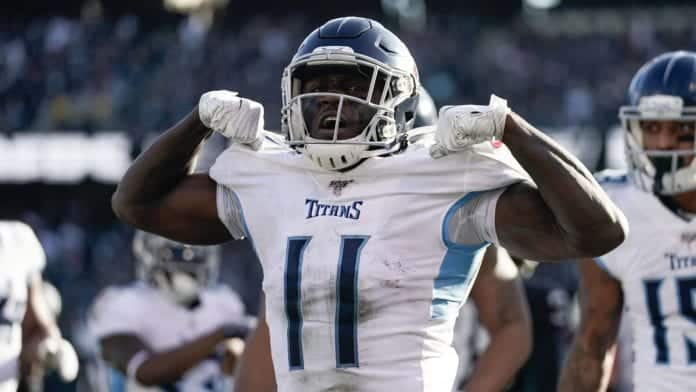Prospect evaluation is one of the most compelling topics in modern football. For nearly a century, the NFL Draft has been the central player acquisition event in the sport, and even now, with so much history behind us, teams are still figuring out how to optimize their draft performance and adequately evaluate players. The 2019 NFL WR draft class is a prime example of this.
Several fundamental questions exist at the root of draft evaluation. Is there a proportional body of traits to consider for each prospect, weighted equally among similar position groups, or do certain traits deserve to be weighted more heavily? Is there a stringent prototype to follow for each position group, or is it more complicated than that? Can certain traits compensate for lacking traits elsewhere?
The 2019 NFL WR draft class is an intriguing case study on these questions. Heading into April of 2019, the 2019 NFL WR draft class was widely regarded as a class with incredible depth, but less inspiring top-end reliability. Whether it was Marquise Brown’s frame, or D.K. Metcalf’s agility, or Terry McLaurin’s production, or A.J. Brown’s long speed, each top prospect in the 2019 NFL Draft WR class was perceived to be lacking in one or more prototypical categories, and they were all penalized uniquely for these perceptions.
Of the 2019 NFL WR draft class, only two prospects – Marquise Brown and N’Keal Harry – were picked in the first round. Seven receivers were picked on Day Two, and four were selected on Day three. Prototype perceptions contributed to a universal hesitance among NFL teams to overdraft receivers in 2019. During the 2019 regular season, a near-universal wave of production from these receivers occurred, which may force these teams to go back to the draft board and re-evaluate how they approach the wide receiver position.
Of the top eight statistical rookie wide receivers, only one, the eighth-ranked receiver, was picked in the first round. The rookie with the highest volume yield, Tennessee Titans WR Brown, was selected in the second round. So too were standouts Metcalf and Deebo Samuel, who both eclipsed 57 catches and 800 yards. McLaurin, who was on pace for 1,000 yards before sitting out Week 17, was the 12th WR taken in the 2019 NFL Draft class. Fifth-round rookies Darius Slayton and Hunter Renfrow also carved out premier roles on their respective teams.
The production of the 2019 NFL WR draft class is peculiar, not only because it is immediate, but because it does not rise and fall proportionally with the draft order. In a way, this was to be expected; there are always gems that go overlooked and underdeveloped prospects who are picked earlier than expected. But the production chart of the 2019 NFL WR draft class reads more like an inconclusive scatter plot than anything else, and there’s no clear trend to follow.
At the WR position, the 2019 NFL Draft saw exceptional production on Days two and three. Five rookies broke the top-30 in Pro Football Network’s OSM (Offensive Share Metric) rankings; of those rookies, three were second-round picks, one was a third-round pick, and one was a fifth-round pick. Three rookies broke the top-seven. Renfrow, a fifth-round pick, was No. 3 in PFN’s OSM rankings for 2019, and Hardman, a second-round pick, was the No. 1 NFL WR in OSM.
Wide receivers are getting ready to produce earlier and earlier, and fewer and fewer receivers have the complete prototype. In an ever-modernizing NFL, proactive teams are learning how to maximize prospects with certain unique traits. The complete profile isn’t as important anymore; receivers don’t have to have a 6-foot-3 frame, 3,000 college receiving yards, and a 4.4 40-yard dash all in one.
Look at McLaurin. He lacked the collegiate production to inspire widespread confidence from NFL teams. Still, with elite athletic traits and an immaculate devotion to sudden details as a route runner, McLaurin took the NFL by storm and flourished in spite of an incredibly volatile quarterback situation.
Similarly, Metcalf was scrutinized for lacking necessary agility. Still, in relation to receivers of his size, his movement was unheard of, and the Seahawks benefitted from their ability to recognize that. Positional thresholds for success change from prospect to prospect, and the positional prototype, previously believed to be rigid, might be more fluid than convention alludes.
McLaurin didn’t need the college production because he had the physical and mental traits to break out with an increased role in the NFL. Metcalf didn’t need the agility of a 5-foot-10 receiver because he’s 6-foot-4, 230, with outrageous straight-line speed and explosion for his size. Hardman didn’t need a 6-foot-0 frame or contested-catch prowess because he had the light-speed acceleration required to find and expand space and separate from defenders once in space. These examples of unconventional profile completion and evaluation errors can be found throughout the 2019 NFL WR draft class.
NFL teams learn from history, and the 2019 NFL WR draft class can be an invaluable teaching tool for teams who are willing to learn. Teams too often scare themselves by worrying about what a wide receiver can’t do. But by focusing on what wide receivers can do, and by configuring their offense to maximize those prospects and their unique traits best, teams can take an imperfect profile, and turn it into the perfect match.
Listen to the PFN Scouting Podcast
Listen to the PFN Scouting Podcast! Click the embedded player below to listen, or you can find the PFN Scouting Podcast on iTunes, Spotify, and all major podcast platforms. Be sure to subscribe and leave us a five-star review! Rather watch instead? Check out the PFN Scouting Podcast on our Scouting YouTube channel.

